15 Shrubs That Bring Color and Charm to Late Summer
Late summer gardens don’t have to fade as the season winds down. Many shrubs continue to shine during this time, adding bursts of color, fragrance, and texture when other plants begin to tire. From long-blooming hydrangeas to butterfly magnets like buddleia, these shrubs keep your garden looking lively and inviting well into the season.
This post may contain affiliate links, which helps keep this content free. Please read our disclosure for more info.
Butterfly Bush (Buddleia davidii)
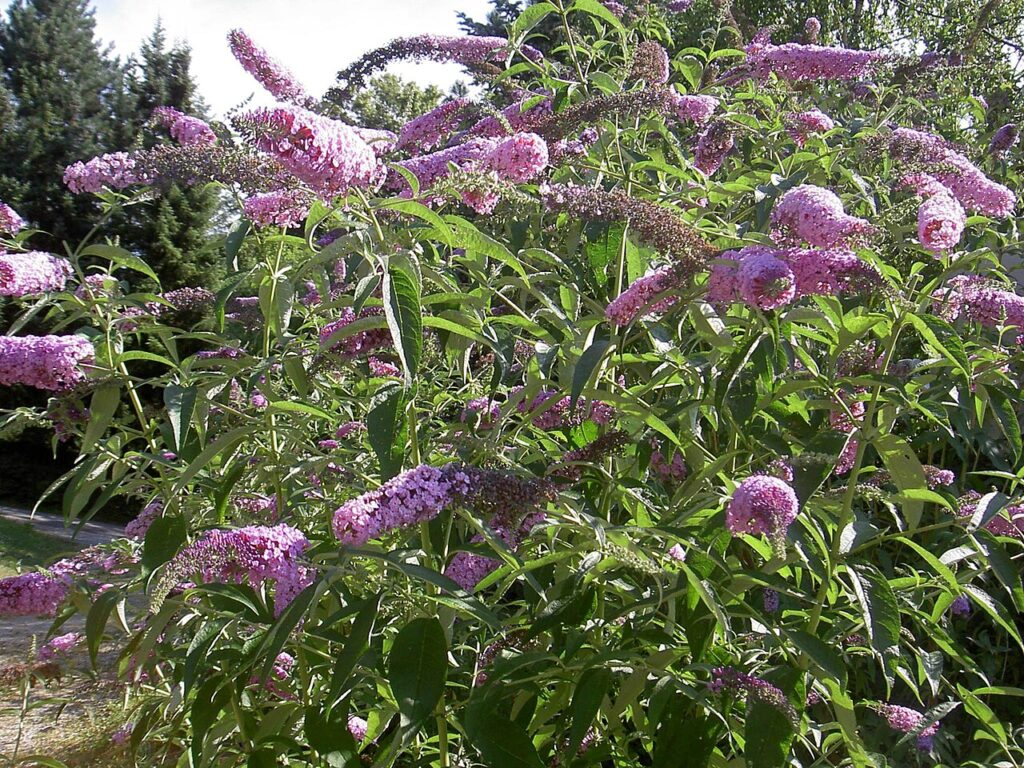
The butterfly bush is a favorite for late summer color, producing long, fragrant spikes in shades of purple, pink, and white. Its nectar-rich blooms draw in butterflies, bees, and hummingbirds, making it a lively centerpiece in any garden. This shrub thrives in sunny spots and adapts well to different soil types.
Even though it flowers generously, it stays relatively easy to care for. A light pruning encourages fuller growth and stronger blooms for the following season. With its arching branches and constant flow of blossoms, it adds both movement and vibrancy to the garden.
Rose of Sharon (Hibiscus syriacus)
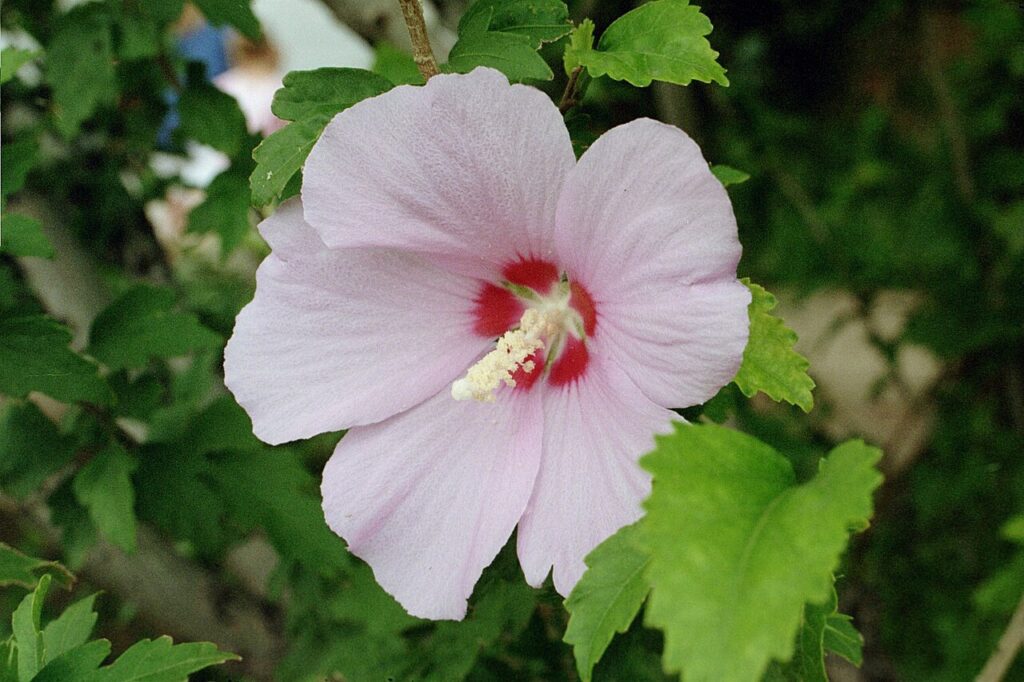
Rose of Sharon is known for its large, tropical-like blooms that continue well into the late summer months. The flowers come in shades of blue, pink, purple, and white, often with striking centers. It tolerates heat and humidity, which makes it an excellent choice for warm climates.
This shrub is versatile, growing as a hedge, specimen, or mixed border addition. Once established, it is fairly low-maintenance and resistant to most pests. Its upright growth habit allows it to fit nicely even in smaller gardens while still providing a dramatic floral show.
Panicle Hydrangea (Hydrangea paniculata)
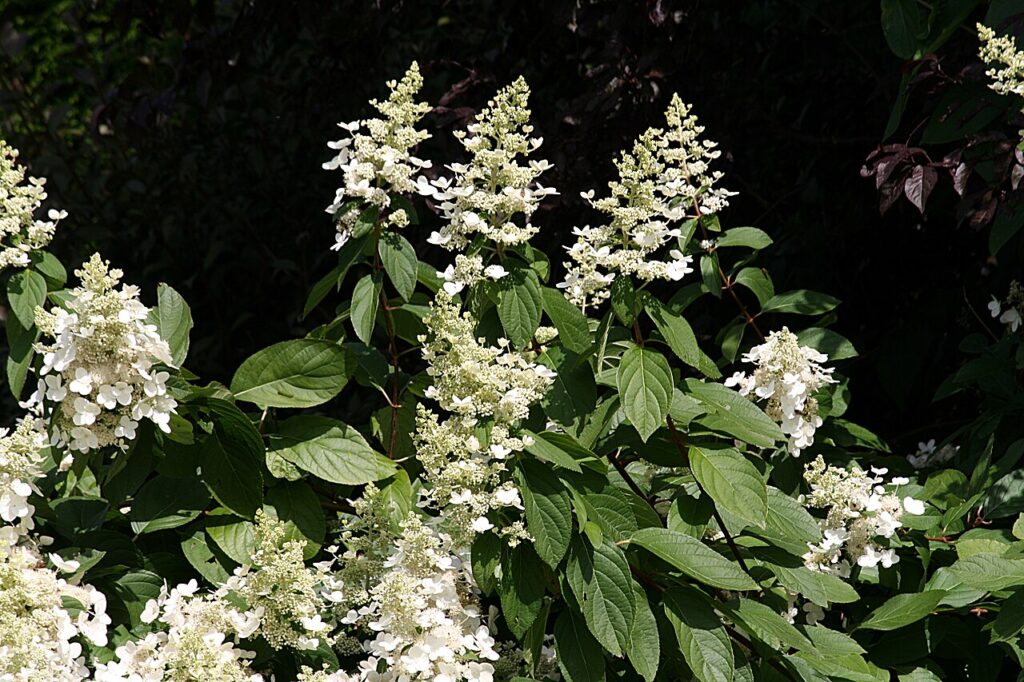
Panicle hydrangeas brighten up late summer with their large cone-shaped flower clusters. Starting out white, the blossoms gradually shift to pink or even a deep red as the season progresses. This color change gives gardeners a constantly evolving display.
Unlike some hydrangea types, panicle hydrangeas thrive in full sun. They are also more tolerant of colder climates, making them a reliable shrub for many regions. With regular pruning, their stems remain strong enough to hold up the heavy blooms.
Bluebeard (Caryopteris)
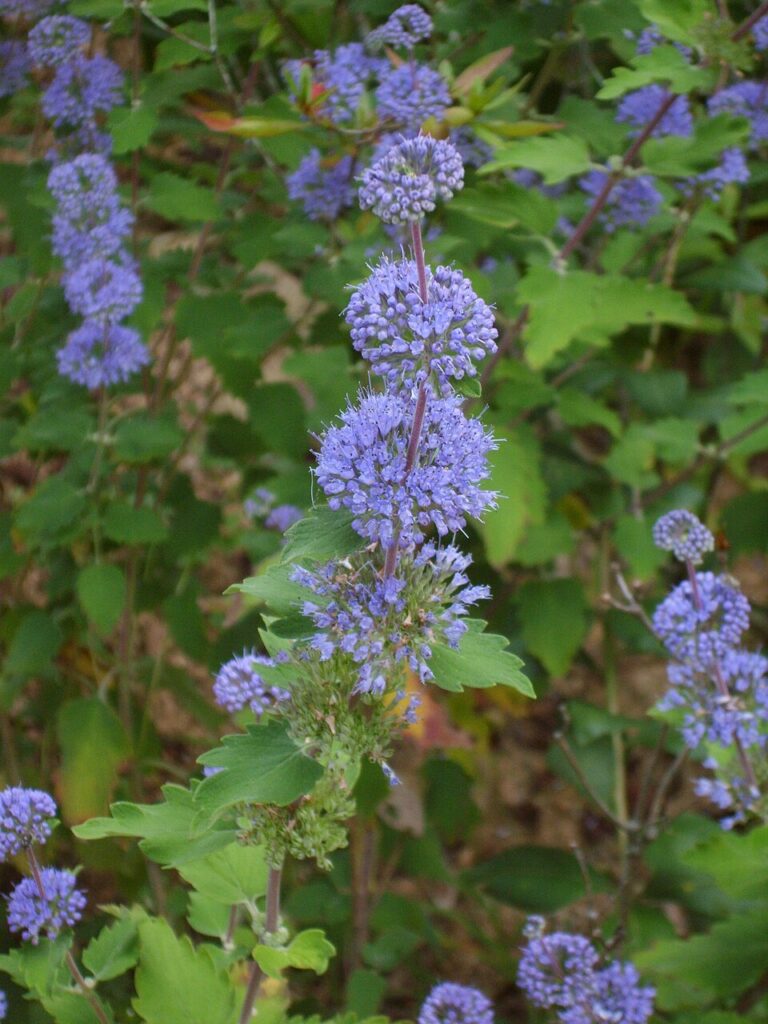
Bluebeard offers a striking burst of blue flowers just when many other plants are winding down. Its silvery-green foliage adds texture and a hint of fragrance to the garden. This compact shrub works well in borders or even as a low hedge.
It prefers sunny spots and well-drained soil, and it often attracts bees and butterflies. Because of its late bloom time, it fills a seasonal gap and keeps the garden looking fresh. Regular pruning in spring helps maintain a tidy shape and encourages more blooms.
Chaste Tree (Vitex agnus-castus)
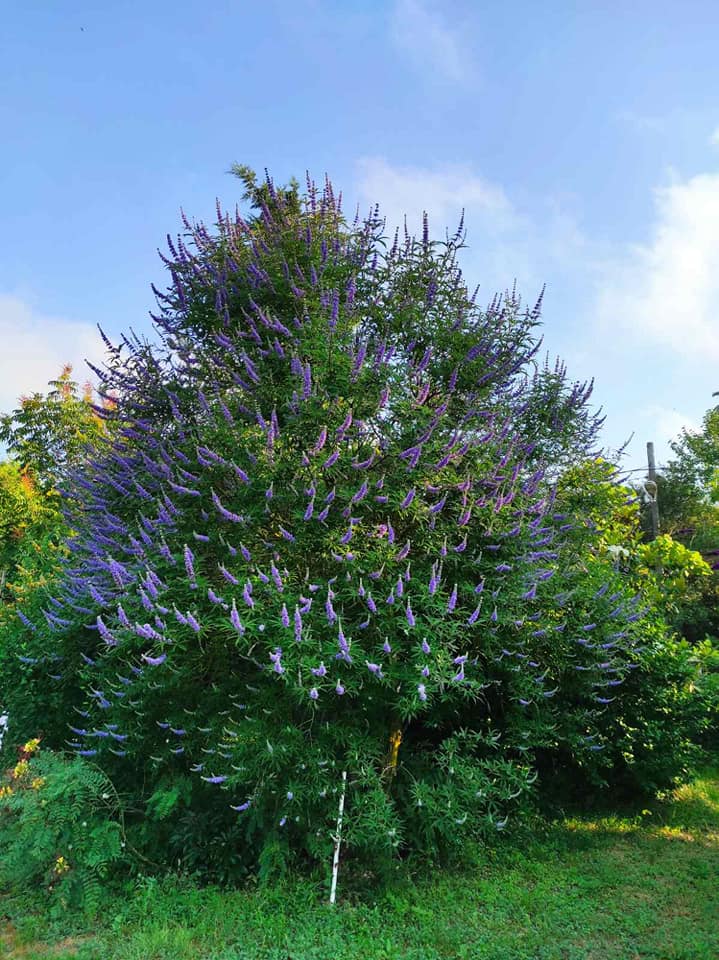
The chaste tree produces tall spikes of lavender-purple flowers that bloom from midsummer into late summer. Its aromatic foliage gives off a pleasant scent when brushed against. In warmer climates, it can grow into a small tree, though it is often pruned into shrub form.
This plant is drought tolerant once established, making it ideal for hot, dry areas. It draws in pollinators like butterflies and bees, adding movement and life to the garden. With its airy flower spikes, it makes an elegant backdrop for lower-growing perennials.
Russian Sage (Perovskia atriplicifolia)
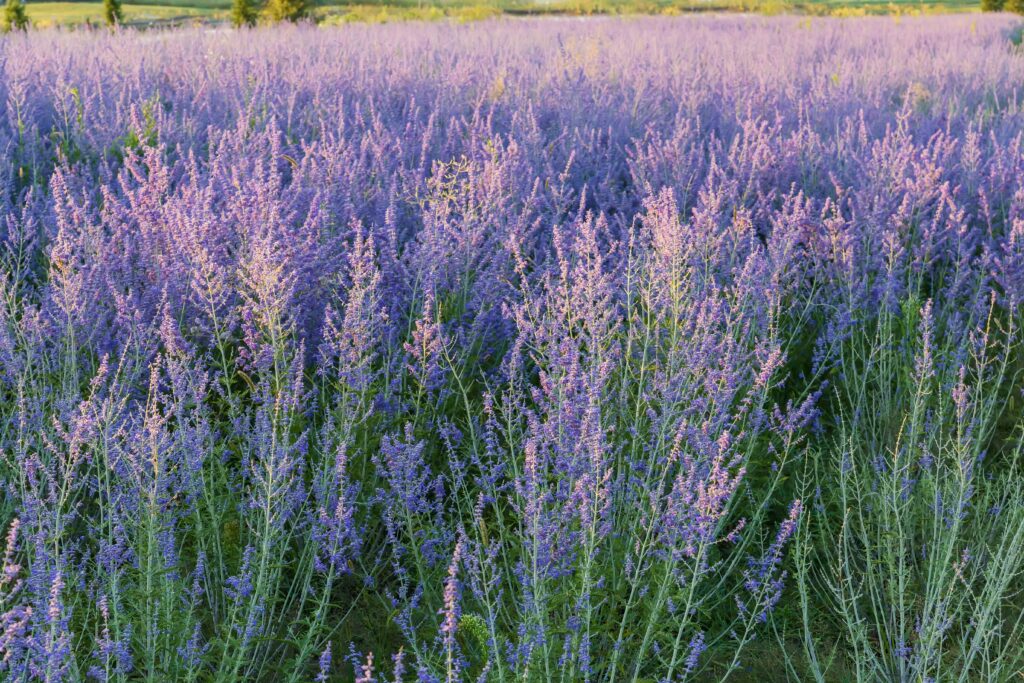
Russian sage is beloved for its tall, airy sprays of bluish-purple flowers. Its silvery-gray stems and foliage provide a striking contrast against greener plants. This shrub-like perennial blooms well into late summer, creating a soft haze of color in the garden.
It is well suited to hot, dry conditions and thrives in poor soils. Russian sage is also resistant to deer and other browsing animals, which makes it reliable in many settings. Once established, it requires little maintenance beyond occasional pruning.
Sweetspire (Itea virginica)
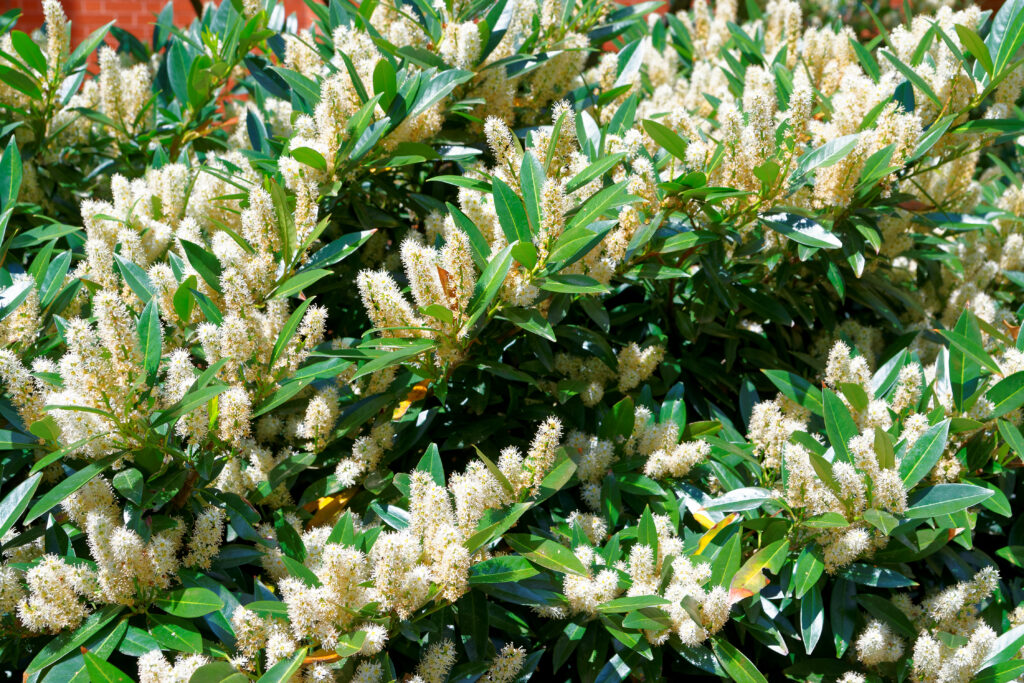
Sweetspire brings arching sprays of white flowers that often linger into late summer. The blooms are lightly fragrant, creating a pleasant atmosphere in the garden. Its glossy green leaves add to its overall appeal and transition beautifully into fall with shades of red and orange.
This shrub tolerates both sun and shade, giving it flexibility in planting locations. It is also well suited to moist soils, even thriving near water features. Sweetspire makes a graceful addition to mixed shrub borders or naturalized areas.
Abelia (Abelia × grandiflora)
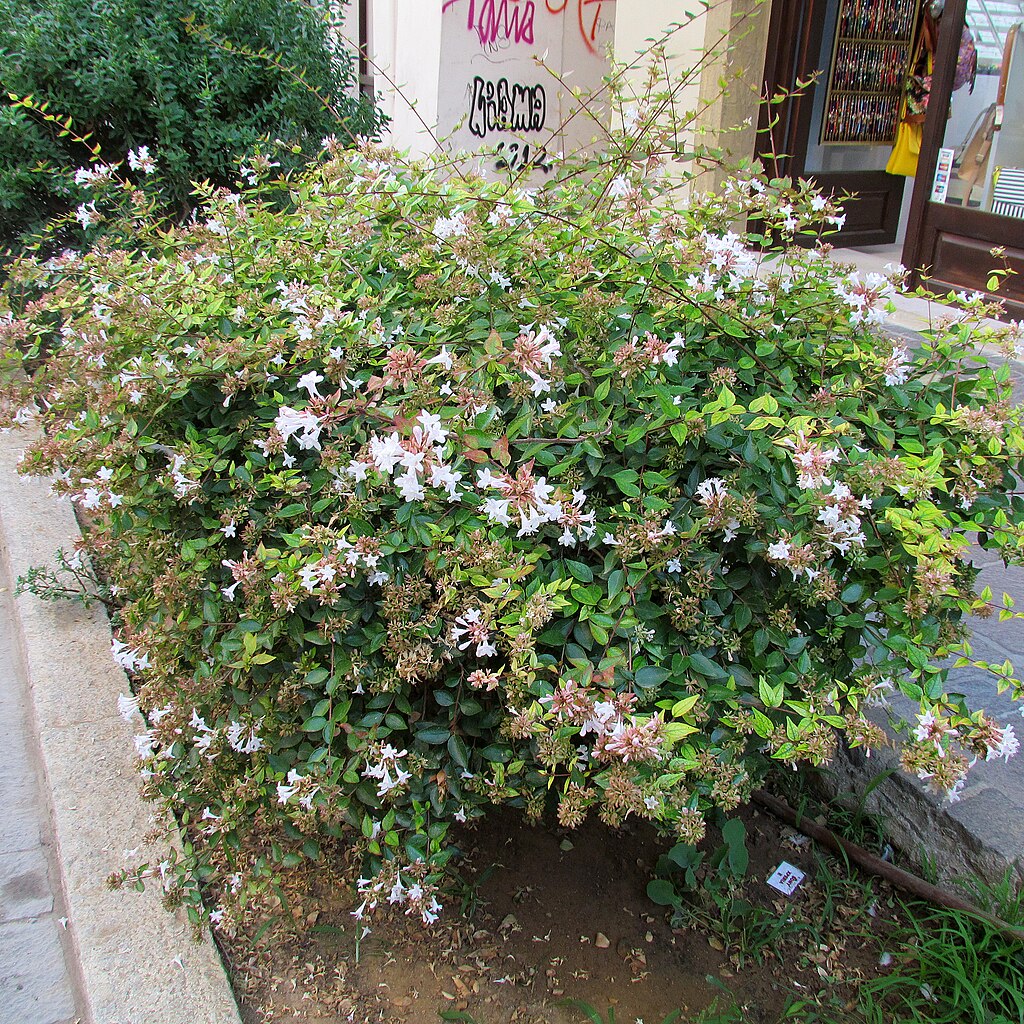
Abelia produces clusters of small, trumpet-shaped flowers in soft pink or white. The blooms last through the late summer and sometimes continue into fall. Its arching stems create a gentle, flowing look that softens any garden space.
The shrub is semi-evergreen in warmer areas, holding onto its foliage longer than many others. It also offers subtle fragrance and draws in hummingbirds. Abelia works well as a foundation planting, hedge, or border accent.
Beautyberry (Callicarpa americana)
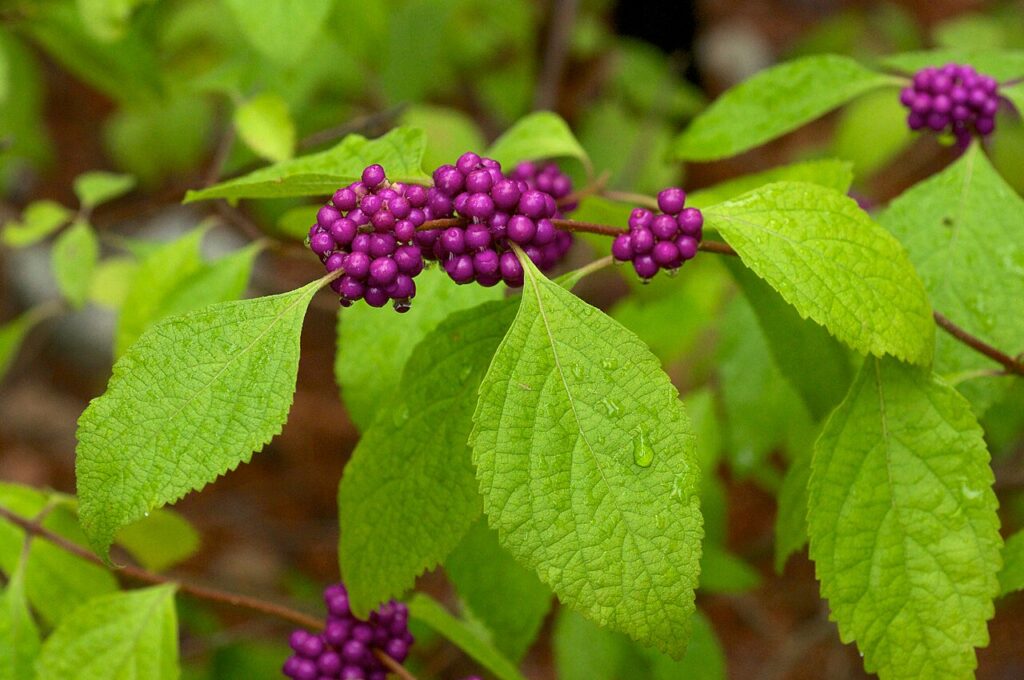
Beautyberry is a shrub that shines in late summer with clusters of vivid purple berries. While its flowers are small and easy to miss, the fruit that follows becomes a true garden highlight. The bright berries often persist into fall, adding lasting interest.
It grows well in full sun to partial shade and adapts to many soil types. Birds love the berries, so it can help attract wildlife to the garden. With its arching branches and colorful fruit, beautyberry pairs well with other flowering shrubs.
Summersweet (Clethra alnifolia)
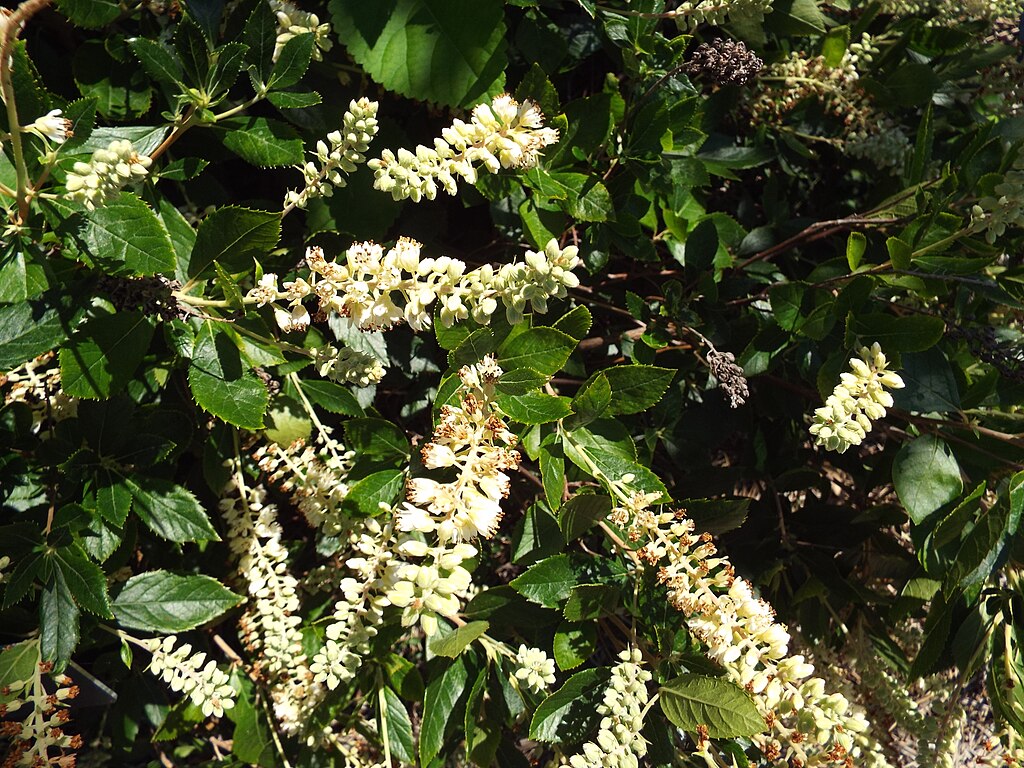
Summersweet offers fragrant bottlebrush blooms in white or pink during the late summer months. Its flowers attract bees, butterflies, and hummingbirds, keeping the garden buzzing with activity. The glossy leaves turn yellow in fall, extending its season of interest.
It prefers moist soils and can tolerate partial shade, which makes it versatile for different garden conditions. Because of its tolerance for damp ground, it can be planted near ponds or low spots. Summersweet is an excellent shrub for both beauty and habitat value.
Crape Myrtle (Lagerstroemia indica)
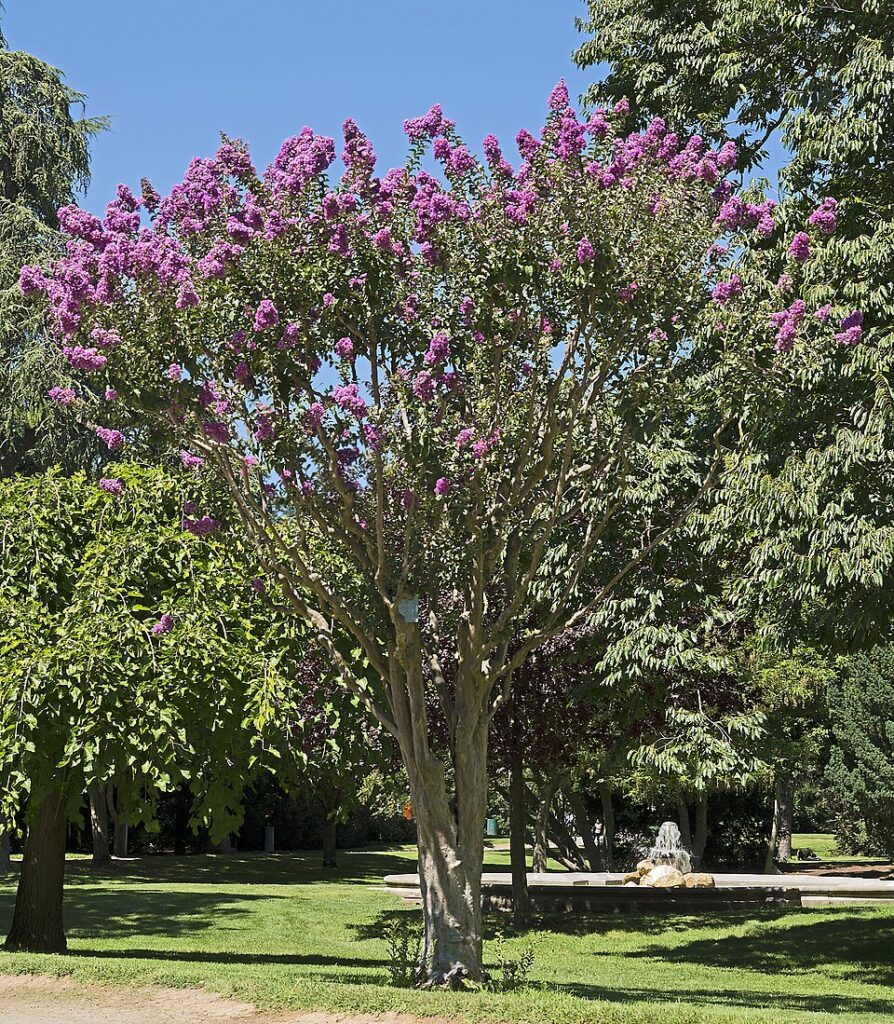
Crape myrtle delivers clusters of flowers in pink, red, purple, or white that can last from mid to late summer. Its blooms stand out for their crinkled, almost crepe-paper-like texture. The shrub or small tree also offers striking bark and fall color.
This plant loves heat and thrives in sunny, warm locations. Many dwarf varieties are available for smaller gardens, while larger types can become statement trees. Crape myrtle continues to provide interest well past the summer season.
Hardy Hibiscus (Hibiscus moscheutos)
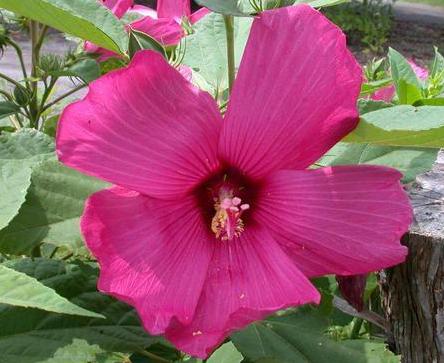
Hardy hibiscus is known for its enormous blooms that can span up to a foot across. The flowers appear in late summer and come in bold shades of red, pink, and white. These tropical-looking blossoms make a strong visual impact.
The plant does best in full sun and moist soil, often thriving near water edges. Despite its exotic appearance, it can withstand colder climates better than expected. With its dramatic flowers, hardy hibiscus becomes an instant focal point in any garden.
Shrubby Cinquefoil (Potentilla fruticosa)
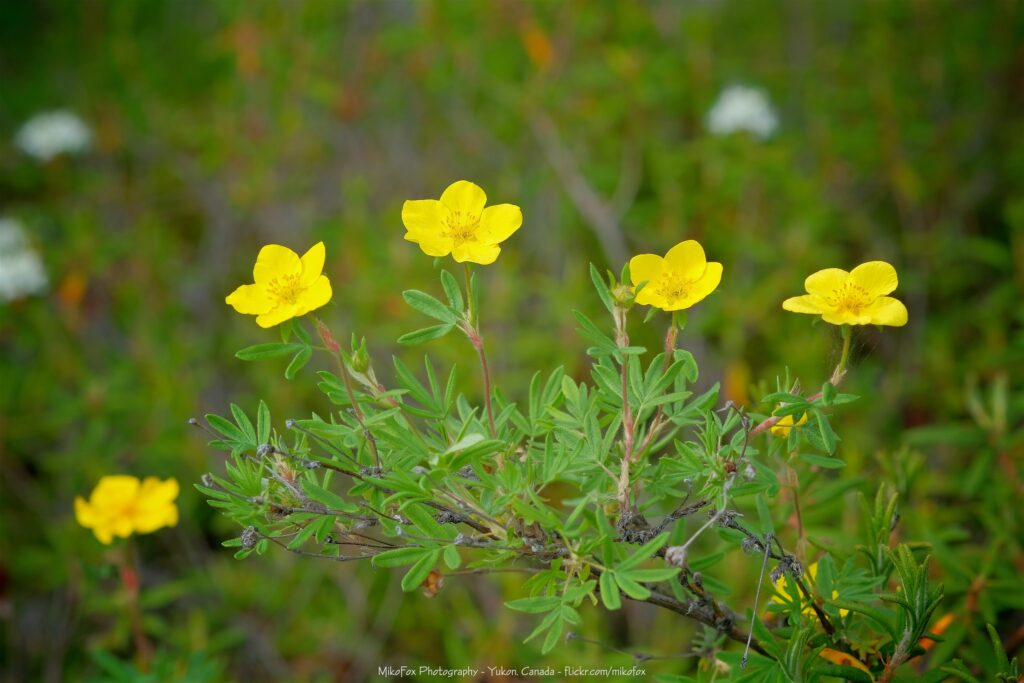
Shrubby cinquefoil is a dependable bloomer, offering bright yellow, orange, or white flowers well into late summer. Its small, dainty blooms cover the plant, creating a cheerful display. This compact shrub is often used in borders, foundation plantings, or mass plantings.
It tolerates poor soils and requires little care once established. Cinquefoil is also drought tolerant, making it suitable for tough spots in the garden. With its long bloom period, it provides reliable color when many other plants have faded.
Hypericum (St. John’s Wort)
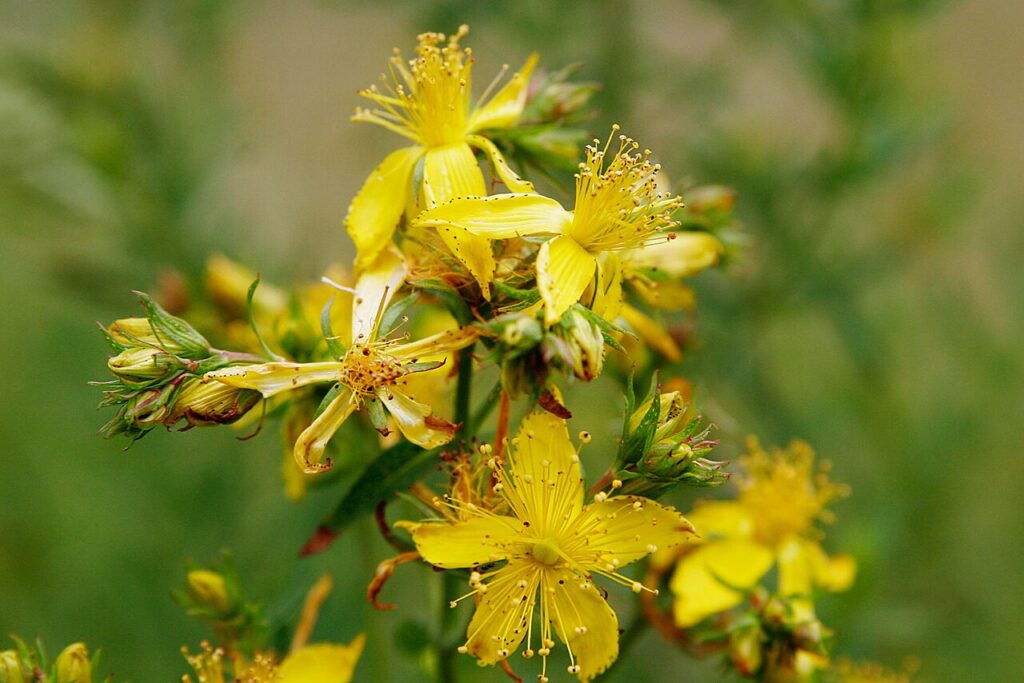
St. John’s Wort produces golden yellow flowers in summer, followed by clusters of ornamental berries that appear late in the season. The berries can be red, pink, or orange, adding a unique touch to the landscape. Its low, mounded shape makes it versatile for different settings.
This shrub is hardy and adaptable, growing in both sun and partial shade. It is often used for ground cover or mass plantings, but it also works well in mixed borders. The combination of flowers and berries keeps it attractive from summer into fall.
Japanese Spirea (Spiraea japonica)
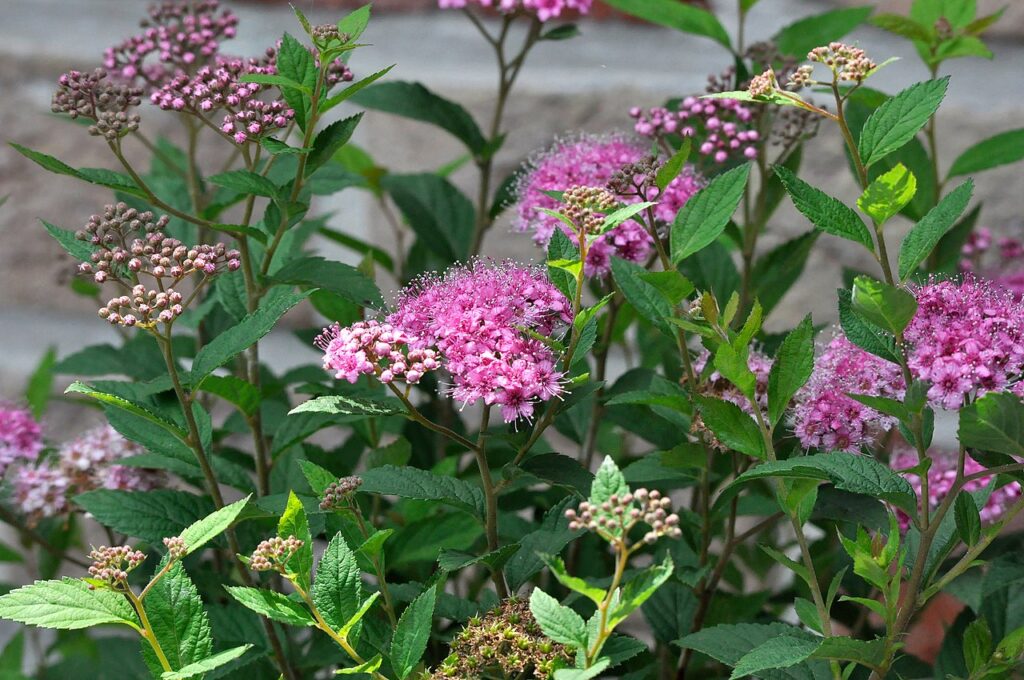
Japanese spirea provides clusters of small pink flowers that often bloom into late summer. Its foliage may also change color as the season shifts, adding extra interest. The shrub has a neat, rounded shape, which makes it easy to incorporate into different designs.
It thrives in sunny conditions and can handle a variety of soils. Spirea is also low maintenance and responds well to pruning, which can encourage repeat flowering. Because of its reliability and steady color, it remains a favorite for many gardeners.
This article originally appeared on Avocadu.
